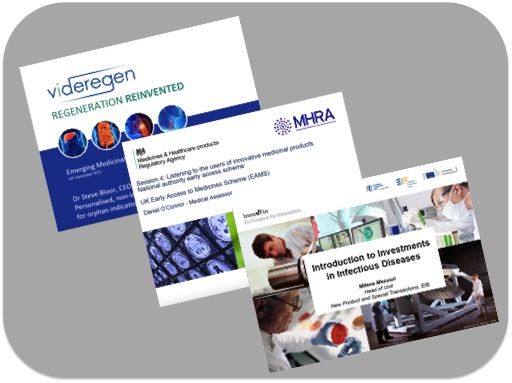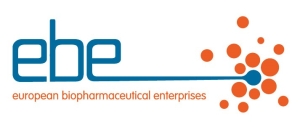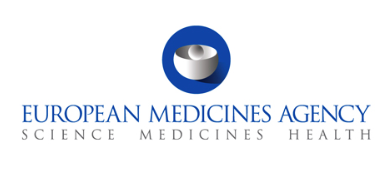14th December 2015 – London
“Thank you. You are doing something we have been longing to be part of for a long time: to discuss with regulators and companies and investors … This collaboration is very important.” – A delegate who has had psoriasis for 40 years speaking at the conclusion of the fourth regulatory policy summit of the European Biopharmaceutical Enterprises (EBE) and European Medicines Agency (EMA)
Introduction
Europe’s world-leading science base is fuelling innovation in advanced therapies, which a growing volume of clinical data indicates will address a diversity of unmet medical needs, delivering better health and generating economic benefits.
However, development timelines can stretch to a decade or more, and in addition to dealing with the regulatory complexity, the small innovative companies working to get these novel products to patients face significant hurdles in accessing finance, negotiating reimbursement and satisfying health technology assessment criteria.
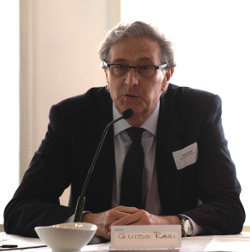 Welcoming delegates to this fourth annual seminar – and at the start of a new five year term in office – Guido Rasi, Director-General of EMA emphasised that while always prioritising safety, the Agency will do all it can to apply its regulatory instruments to support innovation.
Welcoming delegates to this fourth annual seminar – and at the start of a new five year term in office – Guido Rasi, Director-General of EMA emphasised that while always prioritising safety, the Agency will do all it can to apply its regulatory instruments to support innovation.
As one case in point, Rasi cited PRIME (Priority Medicines), a scheme to be launched next year, under which EMA will provide additional support in the form of early dialogue with experts and chaperoning through the regulatory process for products with the potential to address unmet medical needs
“Our remit has not changed and will not change,” said Rasi. “We care about benefit risk, but culturally we have to go beyond that.” In particular, EMA must respond to the emphasis that national Health Technology Assessment (HTA) bodies put on addressing unmet medical need and the added value of new medicines when compared to the existing standard of care.
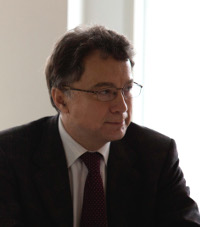 Roberto Gradnik, President of EBE agreed the seminar is an important means of fostering dialogue between stakeholders who otherwise have few opportunities to exchange views. Regulators and investors do not frequently find themselves in the same room, for example. “We need transparent dialogue,” Gradnik said.
Roberto Gradnik, President of EBE agreed the seminar is an important means of fostering dialogue between stakeholders who otherwise have few opportunities to exchange views. Regulators and investors do not frequently find themselves in the same room, for example. “We need transparent dialogue,” Gradnik said.
Europe is in the lead in finessing the complexities of regulating advanced therapies and in bringing products to market, but the process remains long-winded and there are still many areas requiring improvement, to speed up patient access and commercialisation, said Gradnik.
Read the full event report below, or download the PDF version here.
Advanced therapies are making progress in clinical development and 2015 saw approvals including the first stem cell therapy and the first oncolytic virus therapy, reflecting the momentum that is building around novel products based on Europe’s excellent science. Open and transparent dialogue between all stakeholders is needed to maintain the momentum and to smooth the path to approval, reimbursement and access, for advanced therapies that are following on behind.
- Regulators must be involved in horizon scanning to see what products are coming through and to have the regulatory science in place to support their development.
- Regulators need to work with stakeholders to demonstrate that the perception of regulation being a barrier to innovation is out of date. Regulation can act as support for innovation and Europe needs to take the lead in applying regulation as a competitive tool.
- Development of advanced therapies must be patient-centred. The patient view should be heard in regulatory discussions and health technology assessments, and patients should be involved in defining meaningful outcomes.
- The evidence to date suggests that a single round of treatment with an advanced therapy will offer significantly greater effectiveness that lasts over time. Work is needed to shape new models for reimbursement to reflect this.
- Similarly, advanced therapies offer the prospect of reversing pathological processes, rather than treating symptoms. This calls for new clinical endpoints and effort is needed to develop these.
- There is a need to promote harmonisation of the different rules that Member States have set down for regulating and classifying gene and cell therapies next to EU regulations. Key examples are hospital exemptions, which in some Member States are given even when authorised products exist to treat the same condition, and, in the testing of cell and tissue donors, the regulations surrounding genetic modification and the import of cells and tissues from other countries.
- The EMA needs to continue to take a lead in fostering early interaction with HTA bodies in order to factor incremental effectiveness measures into clinic trials and enable companies to go into clinical development understanding what data HTA bodies will require.
- Europe needs to promote the establishment of cross-over funds with the means to support companies up to an initial public offering and to retain a stake after a company is listed.
- An effort is needed to bring some cohesion to Europe’s disparate capital markets, to increase liquidity and attract more specialist investors.
- Patient engagement is moving from lip service to action, but the concern is that the various approaches to how patient evidence is evaluated and factored into drug design will diverge. A multi-stakeholder initiative is needed to ensure a harmonised approach.
Session One: Emerging medicinal products – a look to the future
Advanced therapies is an umbrella term for a broad range of different types of novel products, each of which presents individual challenges in terms of oversight and commercialisation. It is important that as regulators the EMA has a feel both for what will be coming up the pipeline and a developer’s-eye view of the challenges of moving products out of academic laboratories and making them robust and approvable. 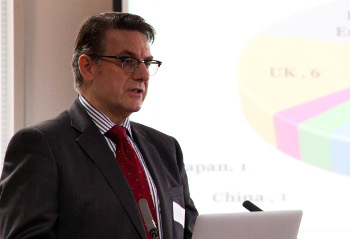 Certainly, science is not standing still, said Keith Thompson, Chief Executive of the UK Cell Therapy Catapult, pointing to the rapid advance of gene editing technologies as a likely source of products that will present fresh challenges for regulators.
Certainly, science is not standing still, said Keith Thompson, Chief Executive of the UK Cell Therapy Catapult, pointing to the rapid advance of gene editing technologies as a likely source of products that will present fresh challenges for regulators.
However, there is now meaningful experience on which to build, with the EMA being the first western regulator to have approved a gene therapy – UniQure’s Glybera – and Thompson noted that other gene therapies are now following in the wake. The government-funded Cell Therapy Catapult was established in 2012 in acknowledgement of the many hurdles and gaps facing companies attempting to translate cell and gene therapies from their academic roots. “We built a team to address all the barriers to the development of the industry,” Thompson said.
This includes health economics, and manufacturing and supply chain issues, in addition to clinical development and regulation. There has been progress since the foundation of the Catapult, when there was considerable uncertainty about regulatory pathways. The EMA, the US FDA and PMDA (Japan’s Pharmaceuticals and Medical Devices Agency) are now overtly using regulation as a competitive tool and are honing and speeding up their processes. “I’m pleased to say the regulatory anxiety is reduced – but it has not gone away,” Thompson said.
What is transforming the outlook is the strength of the clinical signal. In particular, immuno-oncology therapies based on the genetic manipulation of a patient’s own immune cell are eliciting notable responses, matching a clear signal to a clear medical need. As a result, the velocity of product development is increasing, Thompson said. For now, the majority of products in development are autologous therapies based on a patient’s own cells, but allogeneic products, suitable for any patient, are starting to come through. However, unlike traditional pharmaceuticals, which on average have a shelf life of 18 months, cell-based therapies must usually get from manufacturing facility to patient in days, if not hours, said Thompson. Achieving this will require a complete restructuring of supply chains, new logistics and new oversight.
As CEO of the first company to get approval for an Advanced Therapy Medicinal Product (ATMP), TiGenix’s Eduardo Bravo is steeped in the challenges of commercialising cell therapies: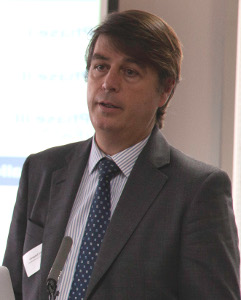
- Cash – as always for European SMEs, the pre-occupying challenge is money. While US venture capitalists are likely to put in cash upfront to move a product from one value inflexion point to another, European investors eke out their contributions. This leaves management with time-consuming and distracting task of perpetually chasing funds.
- Intellectual Property – the difficulty of patenting products based on a patient’s own cells and tissues presents a further obstacle. Although the high level of skill and know how involved in developing advanced therapies makes them hard to copy, investors are always keen to see some form of intellectual property rights.
- Manufacturing – cells are living entities and it is challenging to demonstrate consistency and show a cell product is homogeneous from batch to batch. “Trying to come up with an assay to show cells have the same potency is not easy,” Bravo said.
- Robust trials – to date, most cell and gene therapies started life in an academic setting, and as a result initial clinical trials have been small, under-resourced and generated insufficient data to provide a clear decision point. “I urge people to do big, randomised trials from the outset, then you can say go/no go; yes the cells work/no the cells don’t,” Bravo said.
- Reimbursement – it is time to lay the ground and develop new models for paying for products that, rather than being taken every day like traditional medicines, are administered once and work for the long-term.
- Hospital exemption – commercial success will elude advanced therapy companies if the products for similar indications marketed in EU Member States under the hospital exemptions rule (without undergoing the regulatory approval process and without applying Good Manufacturing Practice rules to their manufacture) are not removed once an EMA-approved product reaches the market and satisfies the medical need for which the hospital exemption was granted. Such hospital exemptions are particularly detrimental, when granted to companies rather than hospitals.
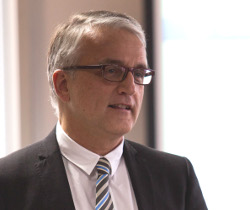 As an example of the mismatch between the “pills-taken-daily” regulatory and reimbursement model and the new treatment paradigm that advanced therapies are likely to deliver, Paul-Peter Tak, Senior Vice President and Head of Immuno-Inflammation R&D at GSK, described research aiming to treat rheumatoid arthritis by neutralising the pro-inflammatory cytokine GM-CSF (granulocyte macrophage colony-stimulating factor), which plays a key role in the inflammatory cascade.
As an example of the mismatch between the “pills-taken-daily” regulatory and reimbursement model and the new treatment paradigm that advanced therapies are likely to deliver, Paul-Peter Tak, Senior Vice President and Head of Immuno-Inflammation R&D at GSK, described research aiming to treat rheumatoid arthritis by neutralising the pro-inflammatory cytokine GM-CSF (granulocyte macrophage colony-stimulating factor), which plays a key role in the inflammatory cascade.
Regardless of what type of drug is administered – be it a disease-modifying small molecule medicine or current biologic medicine, patients with rheumatoid arthritis are more likely to go into remission if treated early on in the evolution of the disease, before the pathology takes hold and there is bone destruction. It can be as long as ten years from the initiation of the inflammatory cycle to symptoms, creating a window of opportunity for achieving higher rates of remission. Achieving this requires the ability to make early diagnoses and an effective therapeutic to neutralise GM-CSF.
Tak said such early intervention would “reverse the treatment algorithm”, and raise all kinds of new challenges from a regulatory standpoint, such as the need to agree new endpoints and decide on an appropriate control. 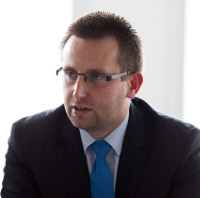
A number of the regulatory challenges of advanced therapies fall outside the scope of EMA noted Tomas Boran, a member of the Committee for Advanced Therapies (CAT). For example, Member States have different rules on testing donors of cells and tissues and on the import of cells and tissues from other countries. In addition Boran noted, EMA’s classification of ATMPs is not legally binding. “There are different classifications from one Member State to another,” Boran said.
One of the companies to have benefitted from the expertise of the UK Cell Therapy Catapult is Videregen Ltd, which is developing a replacement trachea as an ATMP. 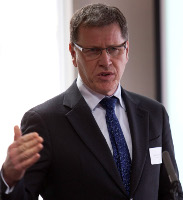 As Steve Bloor, CEO Videregen, described, the process involves de-cellularising a donor trachea to leave a structural scaffold that does not have to be immune-matched to the patient (though there does need to be a size match). The scaffold is then seeded with the recipient’s bone marrow-derived mesenchymal stem cells, before being transplanted.
As Steve Bloor, CEO Videregen, described, the process involves de-cellularising a donor trachea to leave a structural scaffold that does not have to be immune-matched to the patient (though there does need to be a size match). The scaffold is then seeded with the recipient’s bone marrow-derived mesenchymal stem cells, before being transplanted.
Videregen is about to start a four-patient trial in the UK, in the Orphan indication of severe structural airway disease and has won funding from the EU’s Horizon 2020 research funding programme for a larger study. Some of the challenges faced by Videregen underline the need for improved regulatory science in ATMPs.
For example, there is a lack of preclinical models and no guidance on what are the relevant attributes to test when assessing decellularised donor tracheas, or what to measure when looking at how the scaffold interacts with the recipient’s cells, and vice versa. “The cells change the scaffold, the scaffold interacts with the cells, so how do you control this,” Bloor said.
If – as Keith Thompson said – there is “less regulatory anxiety” for companies that are working to develop advanced therapies, that is because without compromising safety, the EMA is being proactive in adapting its regulatory tools to smooth and accelerate development. 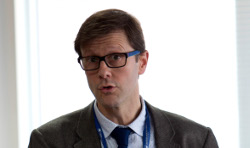 This is more and more a multi-stakeholder approach, with greater transparency, said Jordi Llinares-Garcia, Head of Orphan Medicines at the EMA, introducing a session in which his colleagues outlined the various initiatives the Agency is taking to respond to the challenges faced by companies developing advanced therapies, and the expertise and opportunities for dialogue that the EMA provides.
This is more and more a multi-stakeholder approach, with greater transparency, said Jordi Llinares-Garcia, Head of Orphan Medicines at the EMA, introducing a session in which his colleagues outlined the various initiatives the Agency is taking to respond to the challenges faced by companies developing advanced therapies, and the expertise and opportunities for dialogue that the EMA provides.
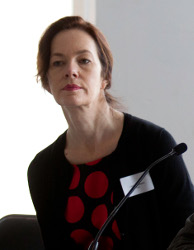 Melanie Carr, who heads the SME Office, described the various routes into the EMA to access expertise and guidance. One entrance is via the Innovation Task Force, a free of charge service where companies can have informal discussions on suitable approaches to the development programme for a product candidate. This service is not limited to EU-based companies, or SMEs. Another is through the SME Office, a one-stop shop for companies that meet the EU’s definition of an SME.
Melanie Carr, who heads the SME Office, described the various routes into the EMA to access expertise and guidance. One entrance is via the Innovation Task Force, a free of charge service where companies can have informal discussions on suitable approaches to the development programme for a product candidate. This service is not limited to EU-based companies, or SMEs. Another is through the SME Office, a one-stop shop for companies that meet the EU’s definition of an SME.
In addition, there are regulatory platforms, in Orphan Medicinal Products and Paediatric Medicines, around which companies can engage with regulators. The EMA also offers a scientific advice service, through which companies can pose questions on what tests are required and get a written response. “What’s most important is not to view it as going through one door, but to plan a strategy and continue the interaction – get advice again and again as development proceeds,” Carr said.
The EMA is in the process of reinforcing the support it provides through the various ‘doorways to dialogue’ with work in hand to optimise development pathways for innovative drugs that meet significant unmet medical need, in the Adaptive Pathways pilot and PRIME (Priority Medicines), a scheme to be launched at the start of 2016.
 The aim of the Adaptive Pathways approach is to use the flexibility inherent in the regulatory system to facilitate development, said Francesca Cerreta, Senior Scientific Officer, EMA, describing the pilot. The intention is that products will be approved for treating small sub-groups of patients, with a requirement to gather real world evidence to confirm safety and efficacy, and potentially to expand the label once a product is in use. “This is a way to balance early access with how stakeholders can address uncertainty,” Cerrata said.
The aim of the Adaptive Pathways approach is to use the flexibility inherent in the regulatory system to facilitate development, said Francesca Cerreta, Senior Scientific Officer, EMA, describing the pilot. The intention is that products will be approved for treating small sub-groups of patients, with a requirement to gather real world evidence to confirm safety and efficacy, and potentially to expand the label once a product is in use. “This is a way to balance early access with how stakeholders can address uncertainty,” Cerrata said.
There is a requirement for HTA bodies to be involved in the design of Adaptive Pathways trials and for their requirements to be factored into development plans. In order to facilitate dialogue and encourage companies to take a creative approach, the pilot process begins with an informal ‘safe harbour’ discussion involving HTA representatives, at which all possible development routes can be explored. Underlining its proactive approach to refining early medicinal product access tools, the EMA is currently updating the guidelines for both Accelerated Assessment and Conditional Marketing Authorisation.
Michael Berntgen, Head of the EMA’s Scientific & Regulatory Management Department said that, having undergone public consultation, the new guidelines will be published in the first quarter of 2016. The aim is to “improve the use” of these tools, he said. Also in the first quarter of 2016, EMA will launch the PRIME scheme, which is intended to promote richer discussions at the early stages of development to support Accelerated Access for products with high public health potential. “There are different tools in European legislation which we consistently review, and [we] provide support in using the framework and [advising] on how [the tools] link together to support overall strategy,” said Berntgen.
At the same time, private investors make a significant contribution and shoulder much of the risk, and it is important for all stakeholders to have some perspective on how private investors see this space.
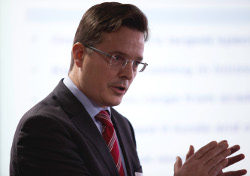 As Joep Muijrers of Life Sciences Partners (LSP), one of Europe’s largest specialist investors in healthcare noted, the amount of money private investors put into biotech in 2015 puts the R&D budget of the average pharma company completely in the shade. However, there is now nervousness on both sides of the Atlantic that, as with the rush of investment that followed the completion of the Human Genome Project, another bubble is developing.
As Joep Muijrers of Life Sciences Partners (LSP), one of Europe’s largest specialist investors in healthcare noted, the amount of money private investors put into biotech in 2015 puts the R&D budget of the average pharma company completely in the shade. However, there is now nervousness on both sides of the Atlantic that, as with the rush of investment that followed the completion of the Human Genome Project, another bubble is developing.
This raises the question, “What lies underneath? What are we investing in?” Muijrers asked. In fact there is plenty of evidence that innovative life science companies have improved treatments and patients are benefitting, Muijrers said, citing examples from three LSP investee companies, Genmab’s oncology antibody daratumumab, GW Pharma’s Epidiolex, which is showing remarkable effectiveness in treating intractable epilepsy, and Spark Therapeutics’ gene therapy treatments for inherited forms of blindness caused by mutations in the RPE65 gene (retinal pigment epithelium-specific protein).
These are three examples of significant medical breakthroughs among dozens Muijrers could have mentioned. But he noted, there is not enough money to fund translation of the majority of Europe’s excellent science. LSP sees 800 proposals each year, of which it funds 1 – 2 percent. “It’s not that the rest are no good,” Muijrers said.
 Vincent Ossipow of another Venture Capital (VC) firm, Omega Funds, reinforced the fact that private investors are promoting innovation, referencing BioVex (now owned by Amgen), which succeeded in bringing the first oncolytic virus through to approval in 2015; Micromet’s bispecific antibodies; Dicerna’s siRNA platform; Juno’s CAR-T cells and Editas’ gene editing technology. “So you can see, we like to take risks on a measured basis,” Ossipow said. The huge disparity in the amount of VC funding between Europe and the US has been exhaustively discussed. In the face of this, Ossipow suggested European VCs are braver, “Because they are fewer and have to carry a bigger load of companies.”
Vincent Ossipow of another Venture Capital (VC) firm, Omega Funds, reinforced the fact that private investors are promoting innovation, referencing BioVex (now owned by Amgen), which succeeded in bringing the first oncolytic virus through to approval in 2015; Micromet’s bispecific antibodies; Dicerna’s siRNA platform; Juno’s CAR-T cells and Editas’ gene editing technology. “So you can see, we like to take risks on a measured basis,” Ossipow said. The huge disparity in the amount of VC funding between Europe and the US has been exhaustively discussed. In the face of this, Ossipow suggested European VCs are braver, “Because they are fewer and have to carry a bigger load of companies.”
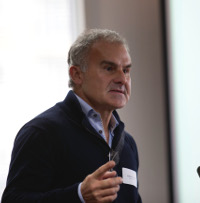 Kevin Johnson of Index Ventures described how his firm has developed an asset-centric approach to defraying the risk, by investing in programmes rather than companies. “We take rough and ready assets and shape them up: the pharma industry needs products not companies,” Johnson said. Having “scoured the world for products” Index then puts the focus on “the killer experiment” that will validate – or not – a particular asset. The aim is to establish proof of concept in around three years for an investment of £12 – £15 million. Index evaluates hundreds of opportunities, but in the past two years has invested in just 18. The programmes mainly originate in academic research and of the 18 assets, 13 are first in class and five are best in class.
Kevin Johnson of Index Ventures described how his firm has developed an asset-centric approach to defraying the risk, by investing in programmes rather than companies. “We take rough and ready assets and shape them up: the pharma industry needs products not companies,” Johnson said. Having “scoured the world for products” Index then puts the focus on “the killer experiment” that will validate – or not – a particular asset. The aim is to establish proof of concept in around three years for an investment of £12 – £15 million. Index evaluates hundreds of opportunities, but in the past two years has invested in just 18. The programmes mainly originate in academic research and of the 18 assets, 13 are first in class and five are best in class.
“So you see, we are heavily involved in building and translating,” said Johnson. In recognition of the shortage of capital for innovation in general and in healthcare specifically, the European Commission has worked with the European Investment Bank (EIB) to develop funding instruments.
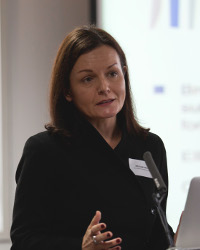 Most recently, the InnovFin range of products was established in June 2015, through the EU’s Horizon 2020 research programme, as Milena Messori of EIB told participants. The funding source allows EIB to take on more risk than is usual and there is a series of integrated and complementary financing tools covering the entire innovation chain. Within InnovFin is a fund devoted to infectious diseases, which under a pilot scheme will provide loans of €7.5 million to €75 million, to fund companies or assets, with the EIB loan covering 50 percent of project costs.
Most recently, the InnovFin range of products was established in June 2015, through the EU’s Horizon 2020 research programme, as Milena Messori of EIB told participants. The funding source allows EIB to take on more risk than is usual and there is a series of integrated and complementary financing tools covering the entire innovation chain. Within InnovFin is a fund devoted to infectious diseases, which under a pilot scheme will provide loans of €7.5 million to €75 million, to fund companies or assets, with the EIB loan covering 50 percent of project costs.
The EIB will conduct full due diligence on projects, which can be anything that has completed preclinical development in the area of vaccines, antibiotics, or for manufacturing facilities. Messori said there is flexibility in repaying loans. “We could get a return through royalties,” she said. Another alternative is that money could be paid back from milestone payments.
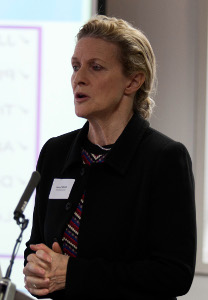 The recognition that “innovation is everywhere, but mostly outside our organisation” was the prompt for Johnson & Johnson (J&J) to devise its innovation centre model, said Jeanne Bolger, Vice President of Venture Investments at J&J. The aim was to create “a single red door” as the entry point for academics and small companies and to give J&J access to academic research and early stage projects. “It’s about getting close to where external innovation is happening and seeing if we can find creative ways of collaborating,” Bolger said.
The recognition that “innovation is everywhere, but mostly outside our organisation” was the prompt for Johnson & Johnson (J&J) to devise its innovation centre model, said Jeanne Bolger, Vice President of Venture Investments at J&J. The aim was to create “a single red door” as the entry point for academics and small companies and to give J&J access to academic research and early stage projects. “It’s about getting close to where external innovation is happening and seeing if we can find creative ways of collaborating,” Bolger said.
Alongside the European Centre, based in London, there are innovation centres in Menlo Park, California; Cambridge, Massachusetts; and Shanghai. There are 30 people in the London office, including five vice president-level scientists specialising in J&J’s five areas of therapeutic focus. In addition, all other legal and commercial expertise needed to complete deals resides in the London centre, as do J&J corporate venture capitalists.
The intention is to invest early, and rather than transferring projects into J&J at this point, to bring J&J’s expertise to the project. As a strategic investor, J&J provides coaching and mentoring to help people shape programmes. Since the first centre was set up three years ago, more than 200 early stage deals have been transacted. The ambition is that these projects will come into the J&J pipeline in the future, Bolger said.
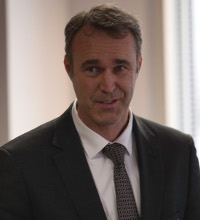 Bridging the funding gaps remains as one of the major challenges of running a European biotech company. This is despite the fact that new start-ups are responsible for the most innovative products and that currently the ten best selling drugs are biologics, said Emil Pot, co-founder of ActoGeniX and vice chair of the EBE Innovation and Funding Models Working Group. While there has been action to bridge the ‘valley of death’ between the typical outputs of a publicly-funded academic research programme and an entity that can attract private capital, less attention has been paid to the larger gap facing companies that have nurtured assets through to the end of phase II of clinical development and now need a sizable cash infusion to pay for larger scale phase III trials.
Bridging the funding gaps remains as one of the major challenges of running a European biotech company. This is despite the fact that new start-ups are responsible for the most innovative products and that currently the ten best selling drugs are biologics, said Emil Pot, co-founder of ActoGeniX and vice chair of the EBE Innovation and Funding Models Working Group. While there has been action to bridge the ‘valley of death’ between the typical outputs of a publicly-funded academic research programme and an entity that can attract private capital, less attention has been paid to the larger gap facing companies that have nurtured assets through to the end of phase II of clinical development and now need a sizable cash infusion to pay for larger scale phase III trials.
In recognition of this, the EBE set up Innovation and Funding Models Working Group – of which Pot is Vice Chair – to assess the size of the gap and suggest how it could be addressed (among other activities). “There are a lot of phase II companies in Europe with a big need of cash and fewer than half are getting funded,” Pot noted. This points to a particular structural defect, which is that Europe lacks cross-over funds that can invest in companies before and after an initial public offering.
Some of Europe’s leading development-stage biotechs have gone to the US to list on the technology market Nasdaq in the past two years, others have been acquired, in the main by US companies. The result is an innovation drain. “The late stage funding gap is really important to bridge if we want to have a mature biotech sector,” said Pot.
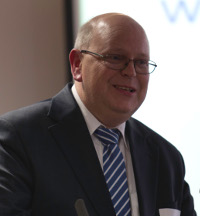 As Holger Schmoll, Chief Financial Officer of AiCuris observed, the German anti-infectives specialist is in many senses the exception that proves the rule about the inadequate financing structure for European biotech. Between its spin-out from Bayer in 2006 to its first commercial deal in 2012, AiCuris raised €200 million in private equity, an unheard of sum for a development-stage company.
As Holger Schmoll, Chief Financial Officer of AiCuris observed, the German anti-infectives specialist is in many senses the exception that proves the rule about the inadequate financing structure for European biotech. Between its spin-out from Bayer in 2006 to its first commercial deal in 2012, AiCuris raised €200 million in private equity, an unheard of sum for a development-stage company.
Eighty percent of this remarkably large investment came from the Strüngmann brothers, Andreas and Thomas, who turned to biotech investing after selling the generic drug manufacturer Hexal AG, of which they were the founders, for $7.5 billion in 2005. The remainder came from similarly long-term investors. “AiCuris’ success has only been possible because we have got patient investors,” Schmoll said. “We are independent of news flow and can invest in our team and scientific expertise, and not in products.”
Building on these strong foundations, AiCuris now has nine novel anti-infectives in its pipeline and is preparing for its next partnering deal. However, the downside of having long-term financial security through a small number of dedicated investors is that AiCuris, despite meeting all definitions for an SME under the EU regulation, is excluded from being categorised as an SME through the ‘linked business’ rule.
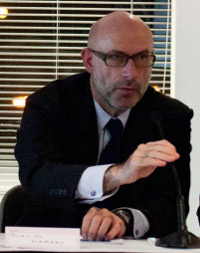 It was HIV activists of the 1980s who first demonstrated how patient power can be used to shape and move forward research and influence regulator’s attitudes, as David Haerry, Co-Chair of the EMA’s Patient and Consumer Working Party described. Amongst other successes were agreements on expanded access, the use of surrogate endpoints, conditional approvals and the testing of two products in a single trial.
It was HIV activists of the 1980s who first demonstrated how patient power can be used to shape and move forward research and influence regulator’s attitudes, as David Haerry, Co-Chair of the EMA’s Patient and Consumer Working Party described. Amongst other successes were agreements on expanded access, the use of surrogate endpoints, conditional approvals and the testing of two products in a single trial.
But “while a lot went well” with the HIV agenda, the same cannot be said for securing access to breakthrough new medicines for Hepatitis C infection. This is despite the fact that these are massively more effective than standard interferon treatment. The process of securing reimbursement is “very bumpy”, even in rich countries such as his native Switzerland, Haerry said.
The problem is that Europe’s many HTA bodies are coming to different conclusions about the cost effectiveness of these products. “I can’t understand the discrepancies,” said Haerry. “If people got the drugs they would be cured.”
The route to navigating this impasse is to include HTA bodies early on in development, to get medicines to patients sooner and assess if they are cost effective once they are on the market, Haerry suggested. More broadly, there is need for a harmonised HTA methodology across Europe.
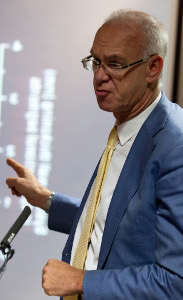 While there is an understandable pressure to get advanced therapies to patients as quickly as possible, there is a risk of going too fast and neglecting fundamental research, said Pieter Doevendans, Chief of Cardiology at the Utrecht Medical Centre, in an overview of attempts to develop stem-cell based therapies for restoring heart function following myocardial infarction. Doevendans was speaking on behalf of the European Society of Cardiology.
While there is an understandable pressure to get advanced therapies to patients as quickly as possible, there is a risk of going too fast and neglecting fundamental research, said Pieter Doevendans, Chief of Cardiology at the Utrecht Medical Centre, in an overview of attempts to develop stem-cell based therapies for restoring heart function following myocardial infarction. Doevendans was speaking on behalf of the European Society of Cardiology.
There was a disparate collection of preliminary evidence that administering a patient’s own bone marrow-derived stem cell into the heart soon after a heart attack was beneficial. However, a randomised controlled Dutch trial HEBE, in which Doevendans was involved, showed that although there was some recovery of function, this did not translate into an overall benefit.
While the data from HEBE were awaiting publication, a €5.9 million EU Framework Programme 7-funded trial, BAMI was proposed. The study aims to recruit 3,000 patients at centres all over Europe.
Another trial, AMICI, sponsored by the Australian biotech Mesoblast Ltd, is taking the technology a stage further, by using donor cells that are available off the shelf. Results of this study are not due until June 2018.
In summary, to date there is little evidence of stem cells having an effect on cardiac function, Doevendans told delegates.
Earlier this year there were also disappointing results in a trial using gene therapy to treat the damage caused by heart attacks. The Cupid trial, in which a viral vector was used to administer the gene for Serc2a, an enzyme that is involved in controlling contractility of heart muscle, was completely negative.
Doevendans believes the reason for these disappointments was that the march to the clinic was too fast. “The problem is the low standard of preclinical work,” he said. The clinical development took off on the back of enticing evidence that stem cells prompted regeneration of heart muscle in mice, before underpinning preclinical data was completed. In addition, there has been a lack of transparency, meaning only 30 percent of relevant animal data was published, Doevendans said.
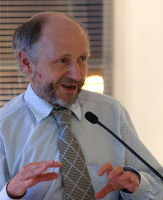 This cautionary tale of more haste, less speed underlines the need for greater efficiency in drug development. “We need to get on,” said Robert Johnstone of the European Patients’ Forum. As Haerry observed, patients are not only waiting, they are dying.
This cautionary tale of more haste, less speed underlines the need for greater efficiency in drug development. “We need to get on,” said Robert Johnstone of the European Patients’ Forum. As Haerry observed, patients are not only waiting, they are dying.
Johnstone, who has had rheumatoid arthritis since he was three years old, estimates that if anti-tumour necrosis factor antibody drugs had been available when he developed the condition, the UK government would have saved around £500,000 in healthcare costs and benefits payments.
“There can be huge savings if there are good treatments,” said Johnstone. “There is no room for inertia, we need to innovate the innovation process.” The way forward is to get patients involved in making decisions, including the assessment of which innovation is most relevant. In addition, Johnstone called for HTA bodies to recognise patients as experts who live with their conditions and hold valid views on efficacy and effectiveness, and have insight on what is most cost-effective in terms of quality of life. In addition, Johnstone called for a single HTA methodology throughout Europe.
In parallel with the EMA’s work to accelerate access to advanced therapies through its Adaptive Pathways pilot, the UK regulator MHRA has set up an Early Access to Medicines Scheme (EAMS) that not only aims to speed up marketing approval in the UK for products that have completed phase II, but also to ensure the National Health Service (NHS) is poised to use products in the scheme as soon as they are licensed.
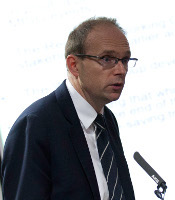 As Dan O’Connor, Medical Assessor at MHRA described, the first step in the process is securing a Promising Innovative Medicine (PIM) designation. “You need PIM to move through the EAMS – this [validates] that the clinical development programme is on track and provides the opportunity to engage with NICE [the UK’s National Institute for Health and Care Excellence] and the NHS, on access,” O’Connor said.
As Dan O’Connor, Medical Assessor at MHRA described, the first step in the process is securing a Promising Innovative Medicine (PIM) designation. “You need PIM to move through the EAMS – this [validates] that the clinical development programme is on track and provides the opportunity to engage with NICE [the UK’s National Institute for Health and Care Excellence] and the NHS, on access,” O’Connor said.
Following on from PIM the MHRA gives a scientific opinion under EAMS, which if positive, allows a product to be marketed in the UK in advance of centralised approval by the EMA. To date, eleven products have secured PIM designation and five have gone on to get early access.
“Patients can get access to medicines before they are licensed and prescribers have greater confidence because they know [products] have been reviewed,” said O’Connor.
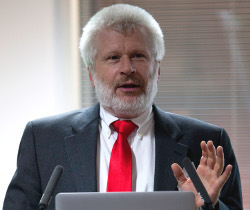 In recent years the pathway of innovation has changed from a linear progression with the patient at the end of the line, to a circular process where the patient is present throughout, said Lode Dewulf, Chief Patient Affairs Officer at UCB. “Now the process is patient to science; science to solution; solution to patient,” Dewulf said.
In recent years the pathway of innovation has changed from a linear progression with the patient at the end of the line, to a circular process where the patient is present throughout, said Lode Dewulf, Chief Patient Affairs Officer at UCB. “Now the process is patient to science; science to solution; solution to patient,” Dewulf said.
This change presents the opportunity to address a major defect in the drug development landscape, which is the “Gaussian tyranny” that focusses on the average population. “This doesn’t recognise diversity or the fact that the average does not exist,” said Dewulf.
However, while patient engagement presents a way to ensure drug development factors in a more representative view of the likely patient population, it also presents a challenge in that development is global and patient engagement is local.
It took 20 years to harmonise toxicology requirements internationally so that a single dossier is accepted worldwide. Involving patients could once again lead to fragmentation and duplication. Patient engagement needs to go global, and to be mapped and synergised, Dewulf suggested.
The Patient Focussed Medicines Development Group has been set up to tame the “wild mushrooming” of patient engagement. The group says while stakeholders have started to develop guidelines and methodologies for improving patient engagement in medicines development, the existing approaches are fragmented. An efficient, measurable and reliable framework that involves patients as partners needs to be developed, validated and applied.
Along with taking a scientific approach to patient inputs, the pharma industry needs to build trust that it will use the information objectively and appropriately. “Engagement requires trust,” Dewulf concluded.





